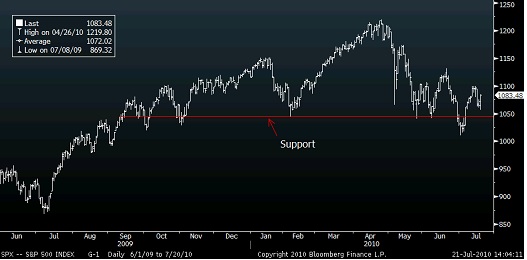
Table of Contents
- What Is the Dow Jones?
- The Dow Jones Industrial Average (DJIA) Explained
- Dow Jones Futures: What They Are and Why They Matter
- IndexDJX DJI: Real-Time Data and Its Importance
- Historical Context: Dow Jones Through the Years
- Dow Jones 30 Companies: A Closer Look
- The Importance of Dow Jones Futures in Investing Strategies
- Dow Jones vs. Other Indices: What Makes It Unique?
- Dow Jones Market Hours: Timing Is Everything
- Dow Jones Dividend Yield: Income for Investors
- Dow Jones Performance: Yearly and Monthly Trends
- Dow Jones Bear Market: Lessons from the Past
- Dow Jones vs Nasdaq: Key Differences
- Dow Jones Trading Strategies: From Basics to Advanced
- Dow Jones Economic Indicators: The Driving Forces
- Impact of the Federal Reserve on Dow Jones
- Conclusion
Dow Jones: An In-Depth Analysis
The Dow Jones is not just a financial index; it's a barometer of the economic health of the United States and, by extension, the global Economy. With over a million searches each month, understanding the Dow Jones Industrial Average (DJIA), Dow Jones futures, and other related concepts is critical for investors, analysts, and finance enthusiasts. This article will break down all aspects of the Dow Jones, covering key points while integrating the most searched terms to ensure comprehensive coverage.
What Is the Dow Jones?
The Dow Jones Industrial Average, commonly referred to as the DJIA or Dow Jones, is one of the oldest and most widely followed stock Market indices in the world. Created by Charles Dow in 1896, the index originally had 12 companies but has now expanded to include 30 blue-chip companies, collectively known as the Dow 30 components. These firms represent major sectors of the U.S. economy.
Unique Insight: Unlike other indices, the Dow Jones is price-weighted, meaning that companies with higher stock prices have a greater impact on the index. This structure can lead to unique fluctuations compared to market-cap-weighted indices like the S&P 500.
The Dow Jones Industrial Average (DJIA) Explained
The Dow Jones Industrial Average is often a topic of conversation during financial news reports. It provides a snapshot of the U.S. stock market's overall performance and influences investor sentiment across the globe.
Dow 30 Components: The 30 companies in the DJIA are leaders in various industries, from technology giants like Apple and Microsoft to stalwarts like Coca-Cola and Boeing.
Calculation Method: The index uses a divisor that is adjusted for stock splits and dividends to maintain consistency.
The DJIA's simplicity makes it accessible, but some critics argue that its price-weighted nature does not always provide an accurate picture of market performance.
Dow Jones Futures: What They Are and Why They Matter
Dow Jones futures are contracts that represent bets on the future value of the DJIA. They allow investors to speculate on the direction of the Dow before the market opens and provide a gauge of market sentiment.
Dow Futures Tomorrow: Monitoring Dow futures can offer clues about the market's next moves, especially after major economic news releases.
Investing in Dow Jones Futures: For active traders, futures contracts are tools for both hedging and leveraging positions.
Tip for Investors: Trading Dow futures requires a clear understanding of market trends and risk management, as these contracts can be highly volatile.
IndexDJX DJI: Real-Time Data and Its Importance
IndexDJX DJI refers to the live and official ticker for the Dow Jones Industrial Average. Watching Dow Jones live data is crucial for traders who need to respond to market changes instantaneously.
- Dow Jones Live Updates: Investors often use platforms that provide real-time Dow updates to track the market’s pulse.
- Impact on Global Markets: Movements in the Dow can influence stock markets worldwide, given the interconnectedness of the global economy.
- Unique Insight: Understanding the Dow's impact can help in creating a diversified investment strategy that hedges against global economic shifts.
Talk to our investment specialist
Historical Context: Dow Jones Through the Years
Dow Jones historical data reveals patterns, trends, and market behavior over decades. From the Great Depression in the 1930s to the 2008 financial crisis, the DJIA has witnessed several monumental shifts.
- Major Milestones: One of the most remarkable milestones was in 1999 when the Dow broke the 10,000 mark. In 2021, it crossed 35,000 for the first time.
- Economic Indicators: The Dow's performance is often used alongside other economic indicators to forecast market trends.
- Analysis: Studying historical data can help long-term investors understand market cycles and prepare for future downturns.
Dow Jones 30 Companies: A Closer Look
Each of the Dow 30 components is a powerhouse in its sector. From industrial leaders to tech giants, these companies provide stability to the market.
Significant Players: Firms like Johnson & Johnson and Home Depot have consistently shown resilience, contributing to the Dow's growth.
Sector Representation: The Dow is more diversified today than it was a century ago, but it still does not represent sectors like utilities and Real Estate.
Did You Know?: The composition of the Dow changes over time. General Electric was a founding member but was removed in 2018, reflecting shifts in the U.S. economic landscape.
The Importance of Dow Jones Futures in Investing Strategies
DJIA futures play a crucial role in market analysis and investment planning. These futures can serve as a hedge against adverse market movements or as a speculative tool for traders looking to capitalize on short-term price changes.
- Strategies for Trading Dow Futures: Successful futures trading involves understanding the macroeconomic environment, from Federal Reserve policies to global events.
- Market Impact: Changes in futures prices can also impact the opening of the stock market, making them essential for pre-market analysis.
- Investment Insight: Dow futures investing is best suited for experienced investors who are familiar with leverage and the potential for significant Financial Risk.
Dow Jones vs. Other Indices: What Makes It Unique?
While the Dow Jones is often compared to the S&P 500 or Nasdaq Composite, it has distinct features that set it apart.
- Focus on Blue-Chip Companies: The DJIA only includes well-established firms, Offering a level of stability not found in more comprehensive indices.
- Price-Weighted System: Unlike the market-cap-weighted S&P 500, the Dow is more susceptible to large price movements of its higher-priced stocks.
- Comparative Analysis: While the Dow is iconic, some argue that the S&P 500 provides a better overall picture of the market. However, the Dow remains a key indicator of American industrial and economic strength.
Dow Jones Market Hours: Timing Is Everything
Understanding Dow Jones market hours is crucial for investors who want to make timely trading decisions. The New York Stock Exchange (NYSE) and Nasdaq operate from 9:30 AM to 4:00 PM ET, but after-hours trading extends the trading window. After-hours activity can often lead to significant price movements. News releases, Earnings reports, and geopolitical events that occur outside regular hours can impact the futures market, setting the tone for the next day. Investors should be cautious during after-hours trading as lower volumes can result in higher Volatility and wider bid-ask spreads.
Dow Jones Dividend Yield: Income for Investors
The Dow Jones Dividend Yield is an important metric for Income-focused investors. Many of the Dow 30 companies have a history of paying consistent and increasing dividends, making them attractive for those seeking stable returns.
- High Dividend Companies: Firms like Johnson & Johnson and Procter & Gamble have strong dividend track records, which can provide a buffer against market volatility.
- Calculating Dividend Yield: The yield is calculated by dividing the annual dividend payment by the stock price, giving investors an idea of the income generated.
A higher dividend yield can indicate stability, but it’s crucial to consider the company’s financial health before investing.
Dow Jones Performance: Yearly and Monthly Trends
Analyzing Dow Jones performance over different time periods helps investors understand how the index responds to various economic climates. Over the past few decades, the Dow has had periods of explosive growth and deep corrections.
- Yearly Trends: Historically, the Dow tends to perform well during economic expansions but may experience significant declines during recessions.
- Monthly Patterns: Certain months, like October, have a reputation for increased volatility, known as the “October Effect,” while December often sees a "Santa Claus Rally."
Dow Jones Bear Market: Lessons from the Past
A Dow Jones Bear Market occurs when the index drops 20% or more from its recent highs. Studying past bear markets, such as the 2008 financial crisis or the early 2020 pandemic crash, provides valuable insights.
- Investor Strategies During Bear Markets: Diversification, dollar-cost averaging, and holding cash reserves are ways to navigate bear markets.
- Recovery Stories: Despite numerous downturns, the Dow has always recovered and continued its upward trajectory over the long term.
Advice: Use bear markets as learning opportunities and prepare for them with a solid investment strategy.
Dow Jones vs Nasdaq: Key Differences
The Dow Jones and Nasdaq are both popular indices but have significant differences. The Dow is composed of 30 large-cap companies across various sectors, while the Nasdaq is tech-heavy and includes over 3,000 companies.
- Performance Comparison: During tech booms, the Nasdaq often outperforms the Dow. However, during periods of economic uncertainty, the Dow may be more resilient due to its diversified nature.
- Investment Implications: Depending on your risk appetite, you may prefer investing in one over the other or diversifying between both.
- Unique Insight: The Nasdaq's emphasis on tech stocks means it is more volatile, while the Dow is often considered a better reflection of the broader economy.
Dow Jones Trading Strategies: From Basics to Advanced
Developing effective Dow Jones trading strategies can enhance your investment outcomes. Strategies Range from basic buy-and-hold approaches to more complex methods like Options Trading.
- Buy-and-Hold: Ideal for long-term investors who believe in the enduring strength of blue-chip companies.
- Swing Trading: This involves capitalizing on short-term price movements and requires a deep understanding of market trends.
- Advanced Tip:* Using options strategies like covered calls can generate income, while protective puts can safeguard your Portfolio during market downturns.
Dow Jones Economic Indicators: The Driving Forces
Several economic indicators have a direct impact on the Dow Jones, including GDP growth, employment numbers, and consumer confidence.
- Inflation and Interest Rates: High Inflation typically leads to higher interest rates, which can put downward pressure on the Dow. Conversely, a strong GDP report can lift investor sentiment and drive the index higher.
- Consumer Spending: Since consumer spending accounts for a significant portion of the U.S. economy, data in this area often moves the Dow.
- Unique Point:* Understanding these indicators helps investors anticipate market movements and make more informed decisions.
Impact of the Federal Reserve on Dow Jones
The Federal Reserve has a profound impact on the Dow Jones. Changes in monetary policy, such as interest rate hikes or quantitative easing, can lead to immediate market reactions.
- Interest Rate Decisions: When the Fed raises rates, borrowing costs increase, often leading to a decline in stock prices, including the Dow.
- Quantitative Easing: Programs that inject liquidity into the market tend to boost investor confidence and lift the index.
- Unique Insight:* Savvy investors closely monitor the Fed’s meetings and statements, as even a hint of future policy changes can move the Dow.
Conclusion
The Dow Jones continues to be a central figure in the financial world. From Dow Jones futures that provide a glimpse into market expectations to the Dow 30 components that reflect economic stability, the index serves multiple purposes. Whether you are an investor tracking IndexDJX DJI or someone keen on understanding Dow Jones historical data, knowing the nuances of the DJIA is essential for making informed decisions. By keeping an eye on the Dow's movement and understanding its Underlying mechanics, you can be better equipped to navigate the complexities of the stock market.
All efforts have been made to ensure the information provided here is accurate. However, no guarantees are made regarding correctness of data. Please verify with scheme information document before making any investment.












